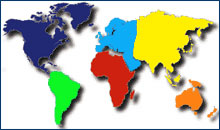Eating in Europe
Dining and restaurants in Europe: what to expect, how to save money, where to eat, and a picnicking primer
Once I sat down at a very traditional trattoria on the outskirts of Florence called Alla Vecchia Bettola. I was the only non-local in the joint. Inspired to go as native as possible, I asked the waiter/owner about the one dish I didn’t recognize that was penciled in at the bottom of the menu (this is a bad habit of mine). He explained that testicciola was a mutton-based stew served in a sheep’s skull.
Hot damn, I thought. Now THAT’S local flavor and no mistake.
So, without inquiring further into the ingredients, I ordered the thing and munched on crostini spread with a liver pate while I anticipated my thoroughly pagan-sounding main course.
Sure enough, the stew arrived in a steamed-clean half a sheep’s skull (how they kept the gravy from running out the eye socket, I’m not sure) I dug in and was slurping merrily away, chewing at bits of sinewy mutton, and trying not to take too much notice of the bits that were clearly not muscle meat—Italians are famous for enjoying the offal and other odd bits of animals, and my philosophy is when in Rome...er, Florence...whatever.
Then, I spooned up a mouthful and slipped it between my lips without glancing down first.
I froze.
There was now something large, soft, and spherical in my mouth.
Now, I don’t know much about sheep anatomy beyond the fact that (a) they’re covered in wool, which must be very itchy for them, and (b) they cease being all that scenic once you get within about ten feet and the smell hits you. However, there are only a few perfectly spherical parts of any animal’s body as far as I can remember from tenth grade biology, and I wasn’t too keen on eating any of them.
My mind quickly tossed up the only lead it could give me in figuring out what was currently weighing down my tongue: the name of the dish. Testicciola. In my slightly panicked state, I was thinking in English, not Italian, so I assumed I had just ingested (well, half-ingested) the sheepish version of that euphemistically-termed “prairie oyster,” which those of us not from regions where strip malls far outnumber farm animals would call “testicles.” We certainly wouldn’t call them “dinner.”
My whole “when in Rome...” philosophy was unraveling quickly, being replaced by a desire to not “do as the Romans do” but rather something more along the lines of “run to the toilet and donate my dinner to the porcelain god.” However, that would not be good manners, and good manners suddenly became important as the owner chose that moment to materialize in front of me, beaming, and ask how I was enjoying my dinner. What else could I do?
I bit down. Hard.
The sphere in my mouth went “pop!,” deflated, and while I swallowed whatever thick liquid had oozed out I quickly chewed the slightly rubbery casing. “Very good!” I replied In Italian with a bit too much forced cheer after swallowing again. “Er, what’s in it, exactly?”
The owner proudly listed the ingredients, some of them acceptable, some of them nasty. None of them was “testicles,” but he then finished his litany with the words “...and one sheep’s eyeball.”
Somehow, I was relieved.
Sampling the local food is just as much a part of traveling as seeing all the monuments and museums, and finding the perfect little bistro can be just as memorable as a day spent in the Louvre, maybe more so. You'll have the chance to savor interesting flavor combinations and to discover the joys of a three-hour dinner replete with multiple courses, excellent wine, and engaging conversation.
Many waiters, concerned that travelers' palates may reject some of the more interesting local dishes, may try to steer you clear from those dishes penciled in at the bottom of the menu. Perhaps this is a service you're only too happy to let them perform. But take it from me: sheep's eyeballs ain't all that bad after all.
Travel is an adventure; foreign dining doubly so. Bon Appetit!
Related Articles |
Outside Resources |
This article was last updated in August 2007. All information was accurate at the time.
Copyright © 1998–2010 by Reid Bramblett. Author: Reid Bramblett.



 ShareThis
ShareThis

